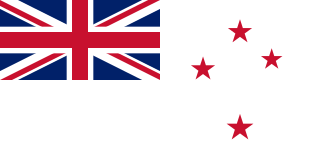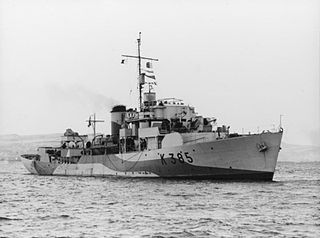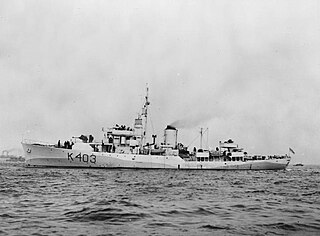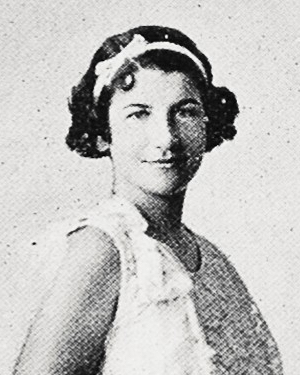
HMNZS Philomel is the main administrative naval base of the Royal New Zealand Navy. Originally a training base on board the cruiser it takes its name from, it is part of the Devonport Naval Base in North Shore City, Auckland, New Zealand.

HMNZS Philomel is the main administrative naval base of the Royal New Zealand Navy. Originally a training base on board the cruiser it takes its name from, it is part of the Devonport Naval Base in North Shore City, Auckland, New Zealand.
The naval base was founded in 1921 when the New Zealand Division of the Royal Navy was first formed. The old cruiser HMS Philomel, with her engines and armament removed, was moored at the Admiralty reservation, Devonport Dockyard, Auckland, and re-commissioned as a naval training base. HMS Philomel has been described as the "Cradle of the Navy." [1]
In October 1941, on the creation of the Royal New Zealand Navy, HMS Philomel was recommissioned as the training base HMNZS Philomel. Because of wartime demands for increased training many of her training functions were transferred, along with the ship's main mast, to a new base HMNZS Tamaki situated at Motuihe Island. [2]
Over the years Philomel sprouted many creative additions on her decks in an effort to provide more space for her operations. These physical extensions then spilled over to the use of onshore buildings.
In January 1947 the boat Philomel was finally decommissioned and HMNZS Philomel became a land establishment. In 2000, HMNZS Tamaki was decommissioned with its functions absorbed again by HMNZS Philomel.
Today Philomel is a sprawling land establishment located at Devonport, New Zealand.
It is the home of the Naval Support Services, responsible for the logistics and organisation of Naval personnel, and for visits to the base by foreign ships. Its Naval Community Office provides support for families of naval personnel, and its Te Taua Moana Marae is the cultural home for all naval personnel, regardless of iwi or upbringing. [3] It incorporates the naval college Tamaki, formerly HMNZS Tamaki, which coordinates training within the naval base from new entry or officer training to damage control and command schools that everyone must attend at stages of their career. There are also schools for naval specialisations such as marine engineering, Officer of the Watch, hydrography and communications. The base includes a navy band and a fleet gymnasium. [4]
The first Royal New Zealand Navy (RNZN) museum was established in 1974 and was housed in a single room within HMNZS Philomel, then in 1982 moved to a separate building. In 2010 it moved to new, larger facilities at Torpedo Bay.
Coordinates: 36°49′46″S174°47′03″E / 36.82958°S 174.78422°E

The Royal New Zealand Navy is the maritime arm of the New Zealand Defence Force. The fleet currently consists of nine ships. The Navy had its origins in the Naval Defence Act 1913, and the subsequent purchase of the cruiser HMS Philomel, which by 1921 had been moored in Auckland as a training ship. A slow buildup occurred during the Interwar period, and then perhaps the infant Navy's most notable event occurred when HMS Achilles fought alongside two other Royal Navy cruisers at the Battle of the River Plate against the German ship, Graf Spee, in December 1939.

Devonport Naval Base is the home of the Royal New Zealand Navy, located at Devonport, New Zealand on Auckland's North Shore. It is currently the only base of the navy that operates ships, and has been in use as a navy base since 1841. The base consists of HMNZS Philomel, the Fleet Support Organisation, and the Fleet Personnel and Training Organisation.

HMNZS Resolution (A14) was a hydrographic ship of the Royal New Zealand Navy (RNZN). Originally the United States Naval Ship USNS Tenacious (T-AGOS-17), the Stalwart-class ocean surveillance ship was used by the United States to locate and track Soviet submarines from 1989 to 1997, when she was transferred to the RNZN for use as a hydrographic survey ship. She served until 27 April 2012. She was subsequently sold to EGS Group, a private surveying company, and renamed RV Geo Resolution.

The history of the Royal New Zealand Navy leads back to early New Zealand-based gunboats used in controlling the British interests in the new colony, as well as to the strong linkages to the British Navy itself.

HMNZS Hawea (F422), formerly HMS Loch Eck (K422), was one of six Loch-class frigates that served in both the Royal Navy (RN) and the Royal New Zealand Navy (RNZN). The ship was laid down by Smiths Dock on 25 October 1943, launched on 25 April 1943 and commissioned into the Royal Navy as HMS Loch Eck on 7 November 1944.

HMNZS Arabis was a modified Flower-class corvette of the Royal New Zealand Navy (RNZN). Built for the British Royal Navy as HMS Arabis, she was transferred to the RNZN on completion. She was commissioned in 1944 and decommissioned in 1948.

HMNZS Arbutus was a modified Flower-class corvette of the Royal New Zealand Navy (RNZN). Built for the Royal Navy as HMS Arbutus, the corvette was transferred to the RNZN on completion in 1944, and operated in the British Pacific Fleet during the final year of World War II. In April 1947, Arbutus was one of the units involved in a mutiny over poor pay and working conditions. She was decommissioned in 1948 and broken up for scrap in 1951.

HMS Philomel, later HMNZS Philomel, was a Pearl-class cruiser. She was the fifth ship of that name and served with the Royal Navy. After her commissioning in 1890, she served on the Cape of Good Hope Station and later with the Mediterranean Fleet.

The New Zealand Division of the Royal Navy also known as the New Zealand Station was formed in 1921 and remained in existence until 1941. It was the precursor to the Royal New Zealand Navy. Originally, the Royal Navy was solely responsible for the naval security of New Zealand. The passing of the Naval Defence Act 1913 created the New Zealand Naval Forces as a separate division within the Royal Navy.

Vice Admiral Sir Peter Phipps, was a senior officer of the Royal New Zealand Navy (RNZN) from the 1940s to 1960s.

The Royal New Zealand Naval Volunteer Reserve (RNZNVR) is the volunteer reserve force of the Royal New Zealand Navy (RNZN).
During April 1947, the Royal New Zealand Navy (RNZN) experienced a series of non-violent mutinies amongst the enlisted sailors of four ships and two shore bases. Over 20% of the RNZN's enlisted personnel were punished or discharged for their involvement. The main cause was the poor rates of pay compared to the rest of the New Zealand Defence Force and equivalent civilian wages, exacerbated by the release of a long overdue government review which failed to address the issue. Sailors saw the new pay rates as still inferior to the other branches of the military, with the increases being consumed by taxes, inflation, and the cancellation of allowances and benefits. The poor living and working conditions aboard RNZN ships was another issue, compounded by sailors having no effective way to make dissatisfaction known to the higher ranks. Dissatisfaction with peacetime duties and opportunities also contributed, with many sailors locked into enlistment periods of up to 12 years, and demobilisation efforts prioritising those enlisted specifically for the duration of World War II.
Commodore George Raymond Davis-Goff was a senior officer in the Royal New Zealand Navy (RNZN).

Lorelle Henderson Corbin, was a New Zealand clerk and naval officer. Born in Adelaide in Australia, she moved to New Zealand with her family in 1925. During the Second World War, she served in the Women's Royal New Zealand Naval Service as a Wren. In 1947, she became director of the organisation, leading it until her retirement in 1963. She died in Wellington in 1995 at the age of 78.

The Torpedo Bay Navy Museum is the official museum of the Royal New Zealand Navy. It opened in 2010, to replace an earlier naval museum. The museum is in Devonport, Auckland.

The Royal New Zealand Navy Band is the musical arm of the Royal New Zealand Navy, serving its musical needs from its headquarters at HMNZS Philomel on Devonport Naval Base, North Shore City, Auckland.
The Women's Royal New Zealand Naval Service (WRNZNS) was the female auxiliary of the Royal New Zealand Navy (RNZN). Raised during the Second World War, most of its personnel, known as Wrens, served as signallers and operators of naval equipment on the Home Front. At its peak, it had a strength of over 500 serving personnel. The WRNZNS disbanded in 1946 but was resurrected the following year to compensate for reduced manpower in the RNZN. It was disbanded again in 1977 when women were allowed to serve with the Royal New Zealand Navy.

HMNZS Mako was a Harbour Defence Motor Launch (HDML) of the Royal New Zealand Navy. Commissioned in March 1943, the ship saw service in home waters during World War II. She was built by Madden and Lewis Company in Sausalito, California.